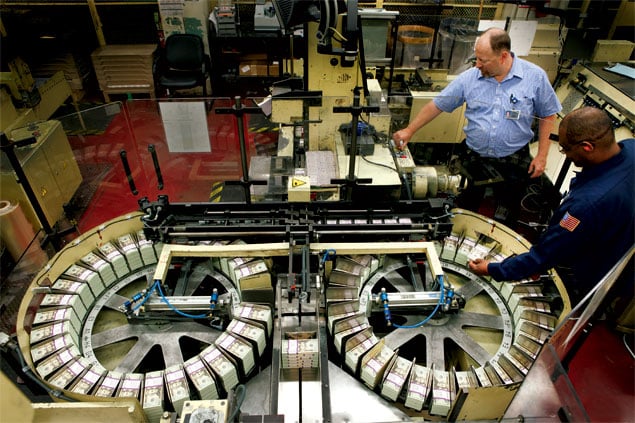While not technically a “factory town,” Washington does have a large factory operating near the Tidal Basin: the Bureau of Engraving and Printing, which has been on DC’s 14th Street, Southwest, since 1914. What it makes is money—seven denominations of bills, to be precise. The nation’s only other money factory is in Fort Worth, Texas.
Money rolls off the presses in sheets of 32 $20 bills at a rate of about 100,000 sheets daily. It takes seven steps to print each bill, and all are made with a special paper blend by Crane & Co. The smell of fresh ink is pungent.
In the last stage of the process, shown here, the $20 bills go through a process called Currency Overprinting Processing Equipment and Packaging, in which they’re cut, stacked, and printed with Treasury and Federal Reserve bank seals before being shipped to the Federal Reserve for distribution.
This article appears in the August 2012 issue of The Washingtonian.


















